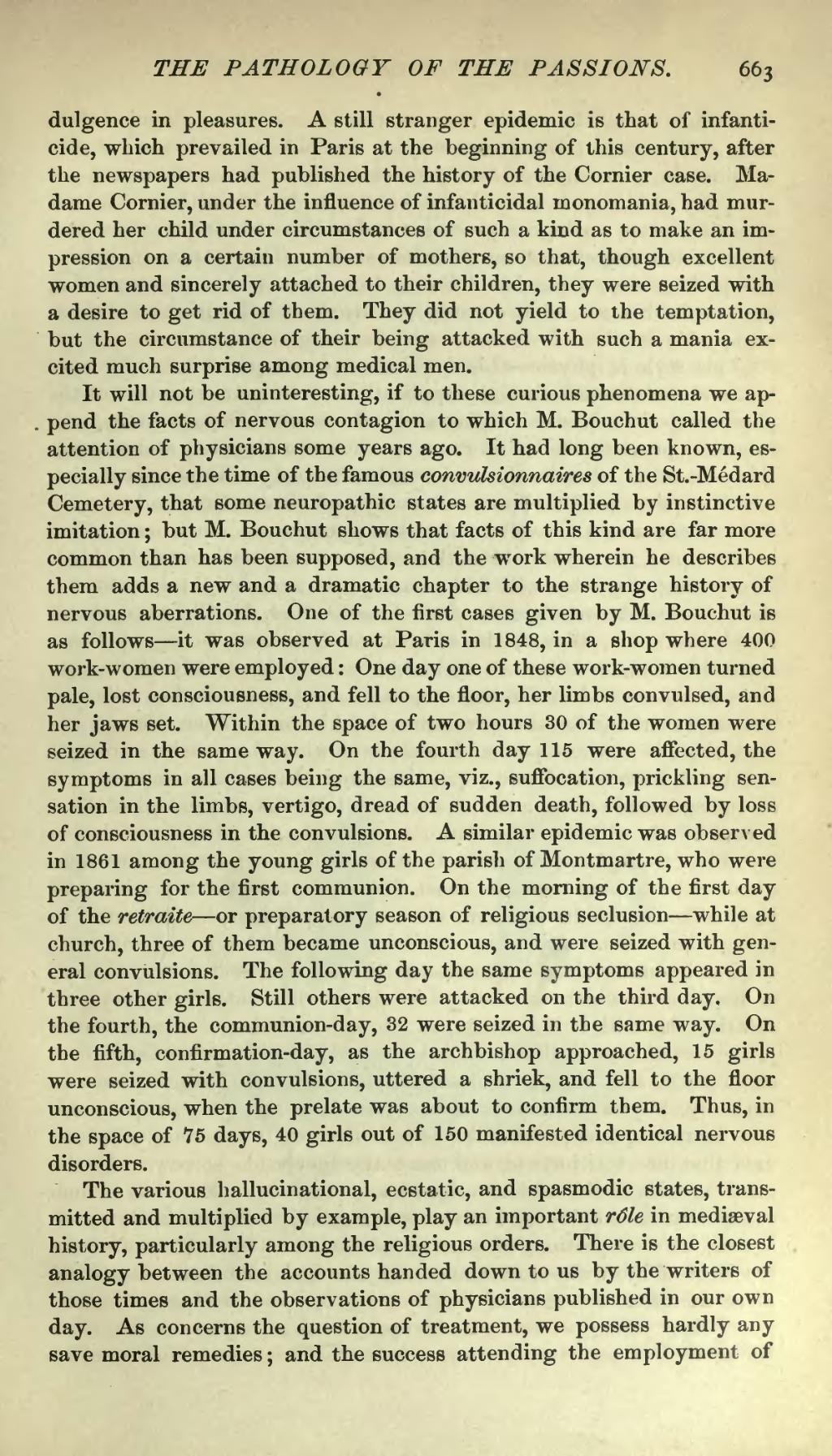dulgence in pleasures. A still stranger epidemic is that of infanticide, which prevailed in Paris at the beginning of this century, after the newspapers had published the history of the Cornier case. Madame Cornier, under the influence of infanticidal monomania, had murdered her child under circumstances of such a kind as to make an impression on a certain number of mothers, so that, though excellent women and sincerely attached to their children, they were seized with a desire to get rid of them. They did not yield to the temptation, but the circumstance of their being attacked with such a mania excited much surprise among medical men.
It will not be uninteresting, if to these curious phenomena we append the facts of nervous contagion to which M. Bouchut called the attention of physicians some years ago. It had long been known, especially since the time of the famous convulsionnaires of the St.-Médard Cemetery, that some neuropathic states are multiplied by instinctive imitation; but M. Bouchut shows that facts of this kind are far more common than has been supposed, and the work wherein he describes them adds a new and a dramatic chapter to the strange history of nervous aberrations. One of the first cases given by M. Bouchut is as follows—it was observed at Paris in 1848, in a shop where 400 work-women were employed: One day one of these work-women turned pale, lost consciousness, and fell to the floor, her limbs convulsed, and her jaws set. Within the space of two hours 30 of the women were seized in the same way. On the fourth day 115 were affected, the symptoms in all cases being the same, viz., suffocation, prickling sensation in the limbs, vertigo, dread of sudden death, followed by loss of consciousness in the convulsions. A similar epidemic was observed in 1861 among the young girls of the parish of Montmartre, who were preparing for the first communion. On the morning of the first day of the retraite—or preparatory season of religious seclusion—while at church, three of them became unconscious, and were seized with general convulsions. The following day the same symptoms appeared in three other girls. Still others were attacked on the third day. On the fourth, the communion-day, 32 were seized in the same way. On the fifth, confirmation-day, as the archbishop approached, 15 girls were seized with convulsions, uttered a shriek, and fell to the floor unconscious, when the prelate was about to confirm them. Thus, in the space of 75 days, 40 girls out of 150 manifested identical nervous disorders.
The various hallucinational, ecstatic, and spasmodic states, transmitted and multiplied by example, play an important rôle in mediæval history, particularly among the religious orders. There is the closest analogy between the accounts handed down to us by the writers of those times and the observations of physicians published in our own day. As concerns the question of treatment, we possess hardly any save moral remedies; and the success attending the employment of

